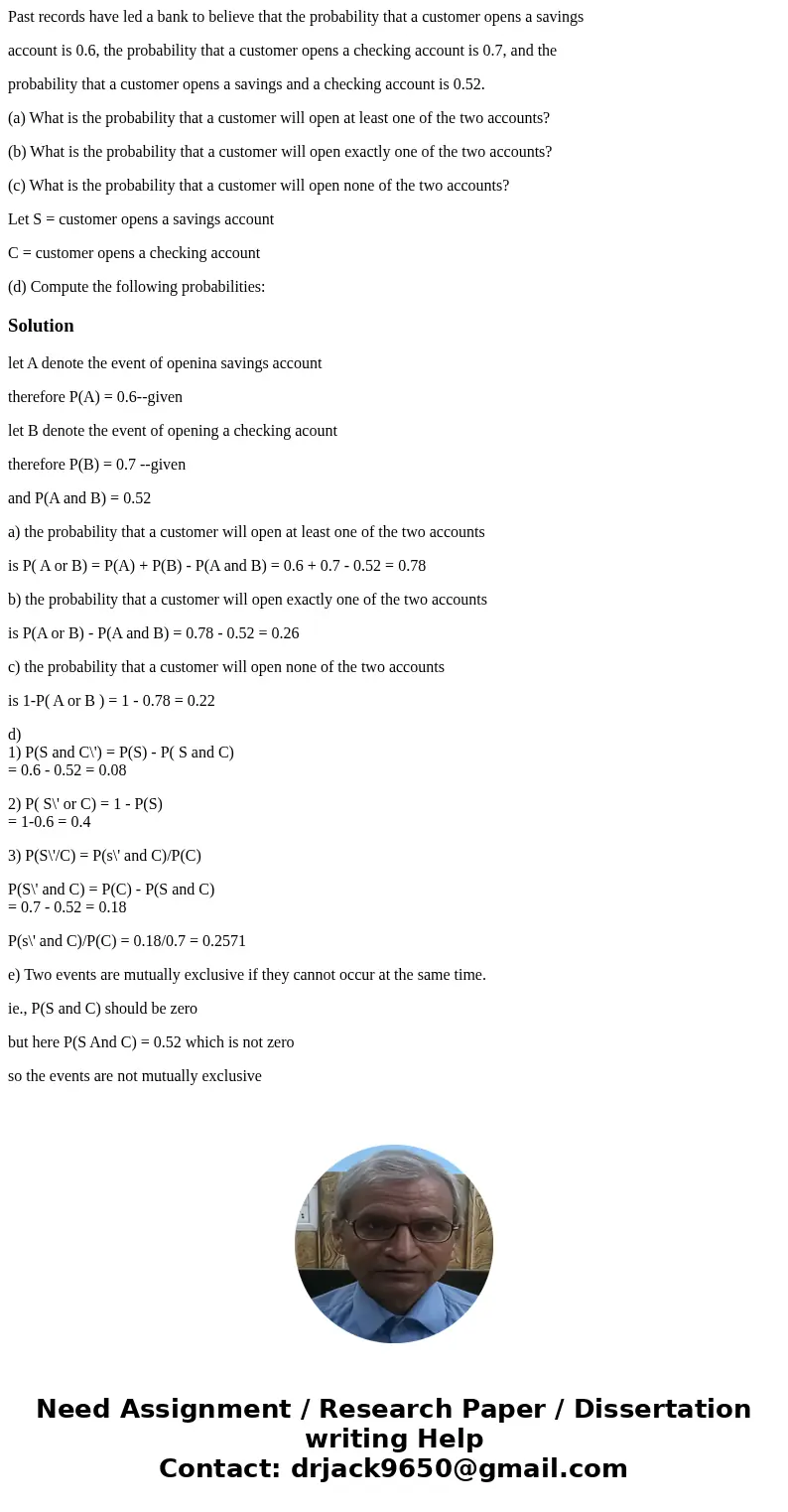Past records have led a bank to believe that the probability
Past records have led a bank to believe that the probability that a customer opens a savings
account is 0.6, the probability that a customer opens a checking account is 0.7, and the
probability that a customer opens a savings and a checking account is 0.52.
(a) What is the probability that a customer will open at least one of the two accounts?
(b) What is the probability that a customer will open exactly one of the two accounts?
(c) What is the probability that a customer will open none of the two accounts?
Let S = customer opens a savings account
C = customer opens a checking account
(d) Compute the following probabilities:
Solution
let A denote the event of openina savings account
therefore P(A) = 0.6--given
let B denote the event of opening a checking acount
therefore P(B) = 0.7 --given
and P(A and B) = 0.52
a) the probability that a customer will open at least one of the two accounts
is P( A or B) = P(A) + P(B) - P(A and B) = 0.6 + 0.7 - 0.52 = 0.78
b) the probability that a customer will open exactly one of the two accounts
is P(A or B) - P(A and B) = 0.78 - 0.52 = 0.26
c) the probability that a customer will open none of the two accounts
is 1-P( A or B ) = 1 - 0.78 = 0.22
d)
1) P(S and C\') = P(S) - P( S and C)
= 0.6 - 0.52 = 0.08
2) P( S\' or C) = 1 - P(S)
= 1-0.6 = 0.4
3) P(S\'/C) = P(s\' and C)/P(C)
P(S\' and C) = P(C) - P(S and C)
= 0.7 - 0.52 = 0.18
P(s\' and C)/P(C) = 0.18/0.7 = 0.2571
e) Two events are mutually exclusive if they cannot occur at the same time.
ie., P(S and C) should be zero
but here P(S And C) = 0.52 which is not zero
so the events are not mutually exclusive

 Homework Sourse
Homework Sourse